NOTE: This post is part of a continuing series of observations: [ First | << Prev | Next >> ]
Last week it appeared as if the two groups of Whooping Cranes at Lake Lewisville had largely worked out their group dynamic. It seemed as if they had begun operating as a more cohesive unit. But this week things were different. The cranes were segregating themselves, and even when the two groups came together for brief periods, it was still very obvious which birds belonged to which group by the way they arranged themselves.
When I arrive at Lake Lewisville on this visit I found the Lake Ray Hubbard pair by the water’s edge. The other five cranes were far to the east on the floodplain in their favorite spot.
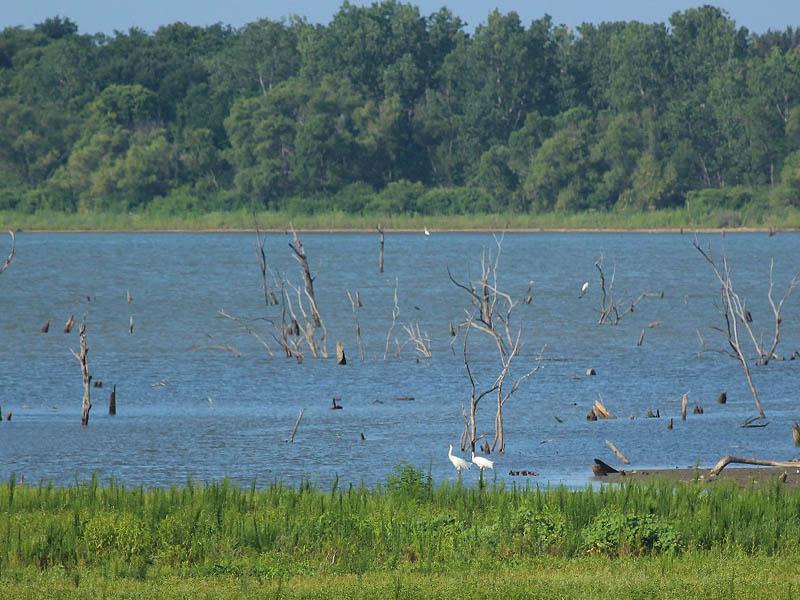
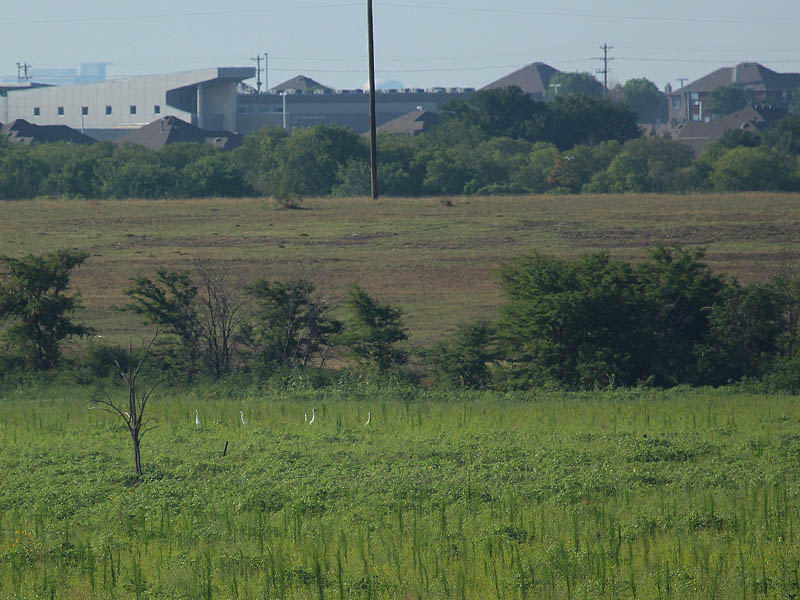
I began surveying the area making general observations when I noticed a Coyote walking along the margins just on the other side of the northwest creek inlet. He was carrying some kind of prey item and soon disappeared into the brush.

Cattle were also on the floodplain today browsing near the water’s edge close to where I saw the Coyote.
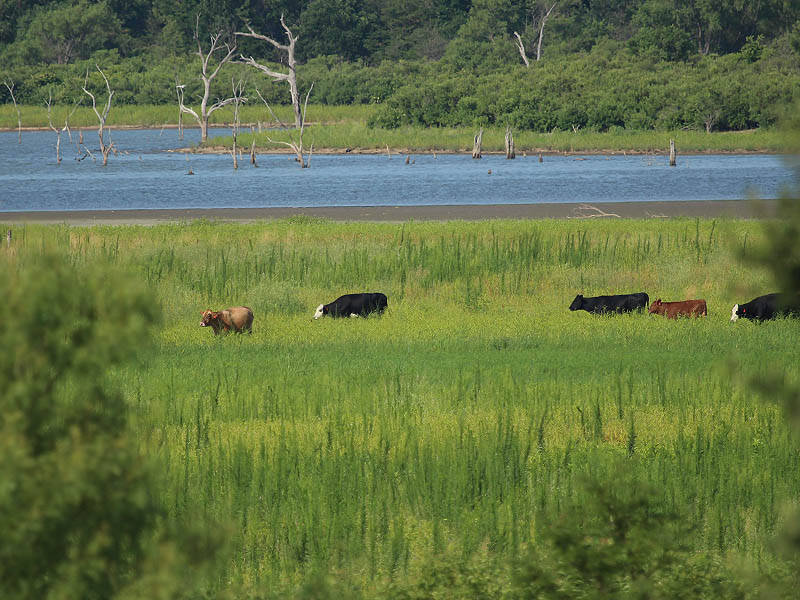
After a few minutes on site I heard the Lake Ray Hubbard pair begin calling out. This was the first time I had heard the cranes vocalize. The five cranes on the floodplain seemed to respond by raising their heads in unison and looking in the direction of the trumpeting pair. It took almost 2-3 minutes more before the five decided to head back to the water.
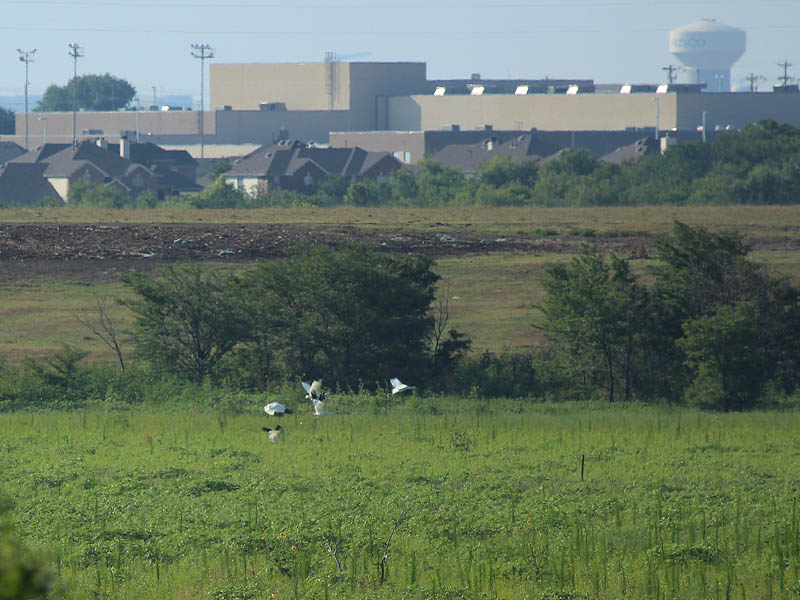


When they arrived at the water’s edge they declined to land near the two Lake Ray Hubbard cranes. Instead, they landed several dozen yards away. After 15 to 20 minutes the five cranes finally flew over and joined the other two.
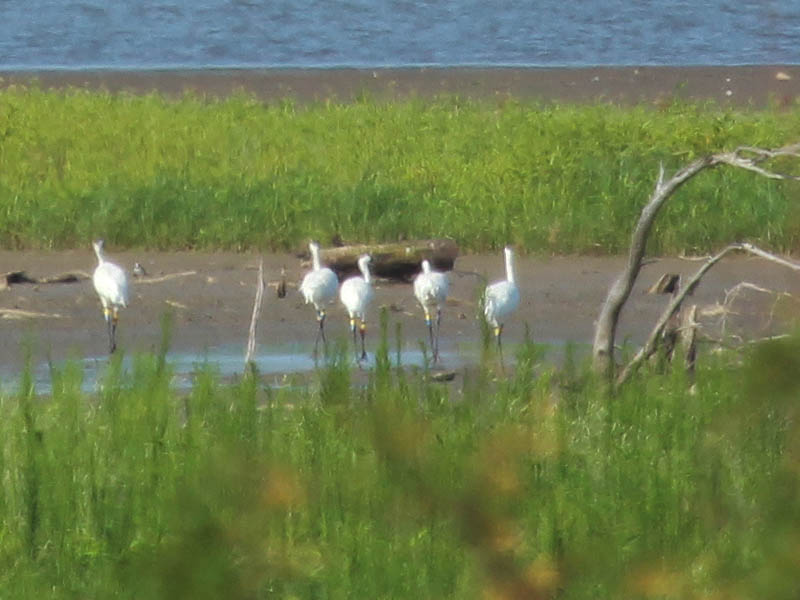
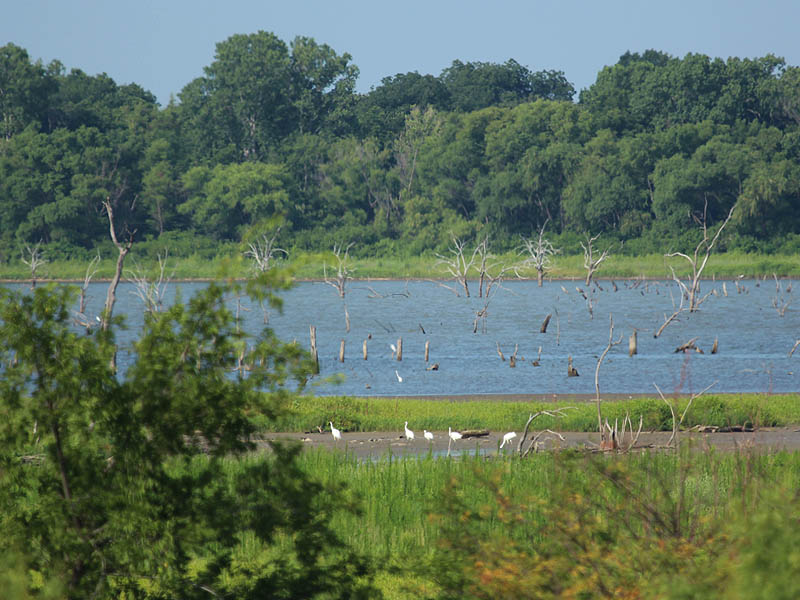
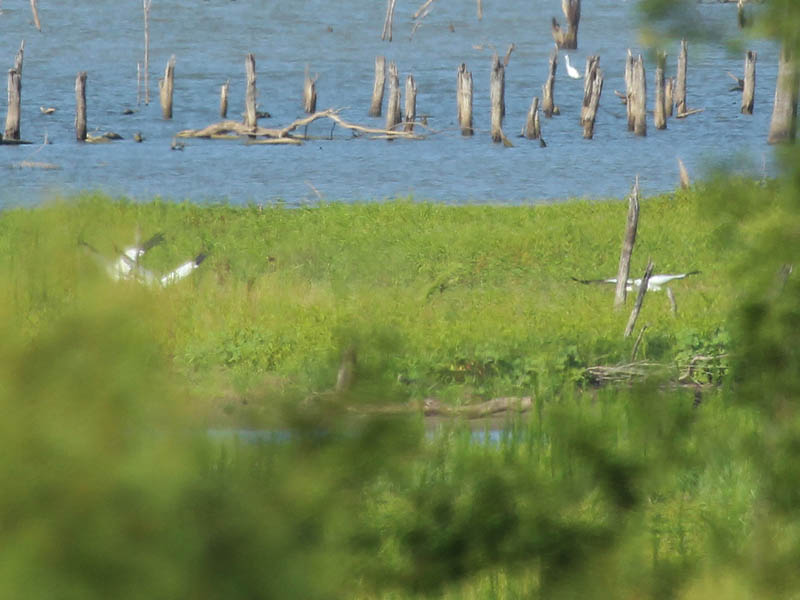


The last picture in this post is a sequence of activity I saw as I was packing up to leave. I wasn’t even sure it was the cranes at the time, but I grabbed a camera a captured a few photos just in case. This appears to be the Lake Ray Hubbard cranes flying toward the treeline to the west. Once there, the two birds dropped down behind the first row of trees and disappeared from sight.

This is the first time I have seen this behavior from either set of cranes. They are becoming more comfortable with their new surroundings and are beginning to explore.
On Google Maps a small inlet or slough can be found in the place where the cranes landed. They have found a more isolated spot for increased privacy.
NOTE: This post is part of a continuing series of observations: [ First | << Prev | Next >> ]


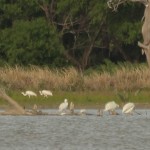
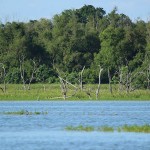



Chris, it would great if you could post your observation location so that others could also observe.
Dave, you may have noticed that I rarely provide specific information about where the animals I photograph are located. I include Google Maps for context only. I do this with the wellbeing of the animals in mind. I’m sure you understand. The Whooping Cranes are a particularly sensitive case, as you can imagine.
I am a member of the Texas Parks and Wildlife Whooper Watcher program and also a Texas Master Naturalist. I have received specific training from TPWD for the Whooper Watcher program and we report all of our observations to TPWD to assist in their management of these birds. So I do understand that these birds are a sensitive case. However your reports have almost no value without the observation location and the additional details that the WW program requires.
Dave, I correspond regularly with the folks in the Whooper Watchers program. These cranes are being monitored by some of their volunteers. If you would like to join this effort, I would suggest that you reach out to your contact at TPWD to make arrangements. If I can get some confirmation of their interest in having you participate, I would be happy to help you identify the best viewing areas. Of course, this comment section is not the best place to try and hash all this out. With that in mind, I would encourage you to contact me via email using the contact link on top right-hand column of the website if you would like to discuss the matter further.
Perhaps Chris could give Dave the information for use by Dave in his capacity as a whooper watcher. I don’t believe making the information available to the public is a good idea. I noticed from Chris’ photos that these birds are already too close to human habitation. Why place them in greater peril by making public their specific locations?
Excellent reporting and photography, Chris.
Thanks for your comments, John. You have it right!
Thanks for not disclosing the whoopers’ location. I can’t imagine that disclosing this publicly would do anything but expose these wonderful birds to harm, as has unfortunately happened from irresponsible members of the public in the past.
Your reports have huge value, as I’m sure everyone else fortunate enough to read them knows.
Just to add, personally I would not give the location information to anyone who does not realize the importance of not giving it out to others.
Thanks for your support, Trudy!